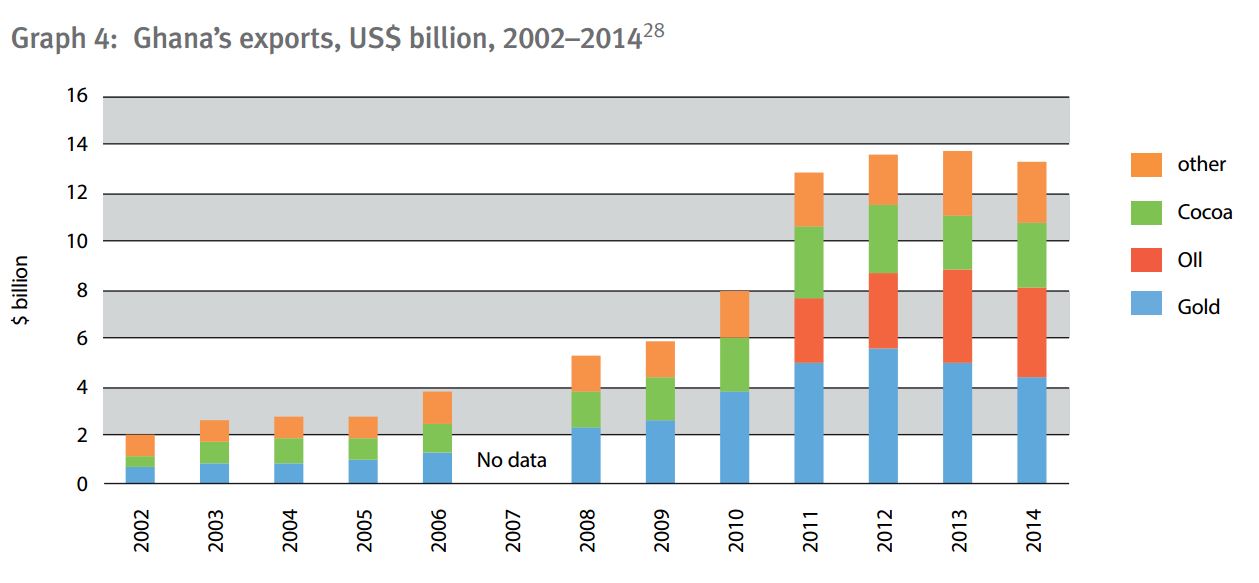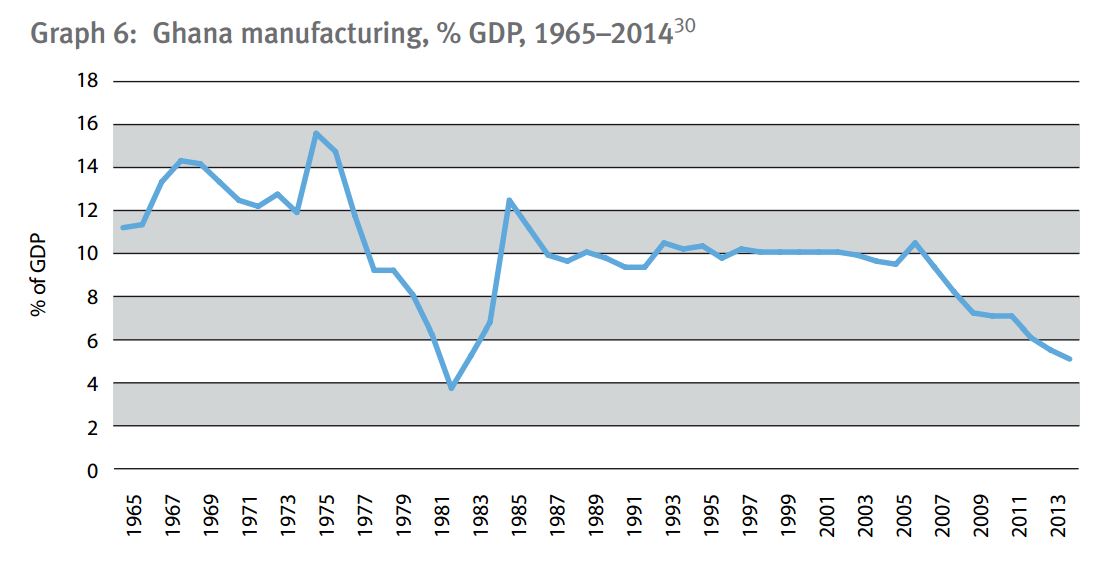|
Getting your Trinity Audio player ready...
|
This is one of the best reports on Ghana’s post-HIPC debt crisis that I have read. It chronicles the nation’s history of high commodity dependence, debt cancellation under the Heavily Indebted Poor Countries initiative (HIPC), recent commodity boom and manufacturing sector decline vis-à-vis the slow progress in reducing poverty and increased inequality of the past decade. It then provides detailed analysis of the recent binge-borrowing craze evidenced by the exponential growth of Ghana’s debt – both external and domestic debts. For example, between 2006 and 2013, the external debt grew at a faster rate than the economy, growing from 10% of GDP in 2006 to 30% by 2013.
Interestingly, the authors of the report also show how the World Bank broke its own rules to enable a high-interest private loan to the Ghanaian government, which speculators can make profit from even if the government never repays any of the principal. In October 2015, the Ghanaian government borrowed $1 billion through a 15-year dollar-denominated bond, at an interest rate of 10.75%. The World Bank guaranteed $400 million of the repayments. But this $400 million of the bond effectively has the same risk as lending to the World Bank as it is guaranteed by them. The World Bank can currently borrow in dollars for ten-years at a 2.5% interest rate. This means that the $600 million that is not guaranteed by the World Bank effectively pays an interest rate of 16.25%. The implication of this is that the Ghanaian government would have been charged 16.25% interest without the World Bank guarantee.
Ghana is in a debt crisis. Despite having had significant amounts of debt cancelled a decade ago, the country is losing around 30% of government revenue in external debt payments each year. Such huge payments are only possible because Ghana has been able to take on more loans from institutions such as the International Monetary Fund (IMF), which are used to pay the interest on debts to previous lenders, whilst the overall size of the debt increases. The underlying causes of the return to a debt crisis are therefore the continued dependence on commodity exports, as well as borrowing and lending not being responsible enough, meaning that new debts do not generate sufficient revenue to enable them to be repaid.
The report is authoritative. It is authored by the Jubilee Debt Campaign, part of a global movement demanding freedom from the slavery of unjust debts and a new financial system that puts people first.
Story: http://jubileedebt.org.uk/reports-briefings/report/fall-rise-ghanas-debt-new-debt-trap-set
Download report: http://jubileedebt.org.uk/wp-content/uploads/2016/10/The-fall-and-rise-of-Ghanas-debt_10.16.pdf


